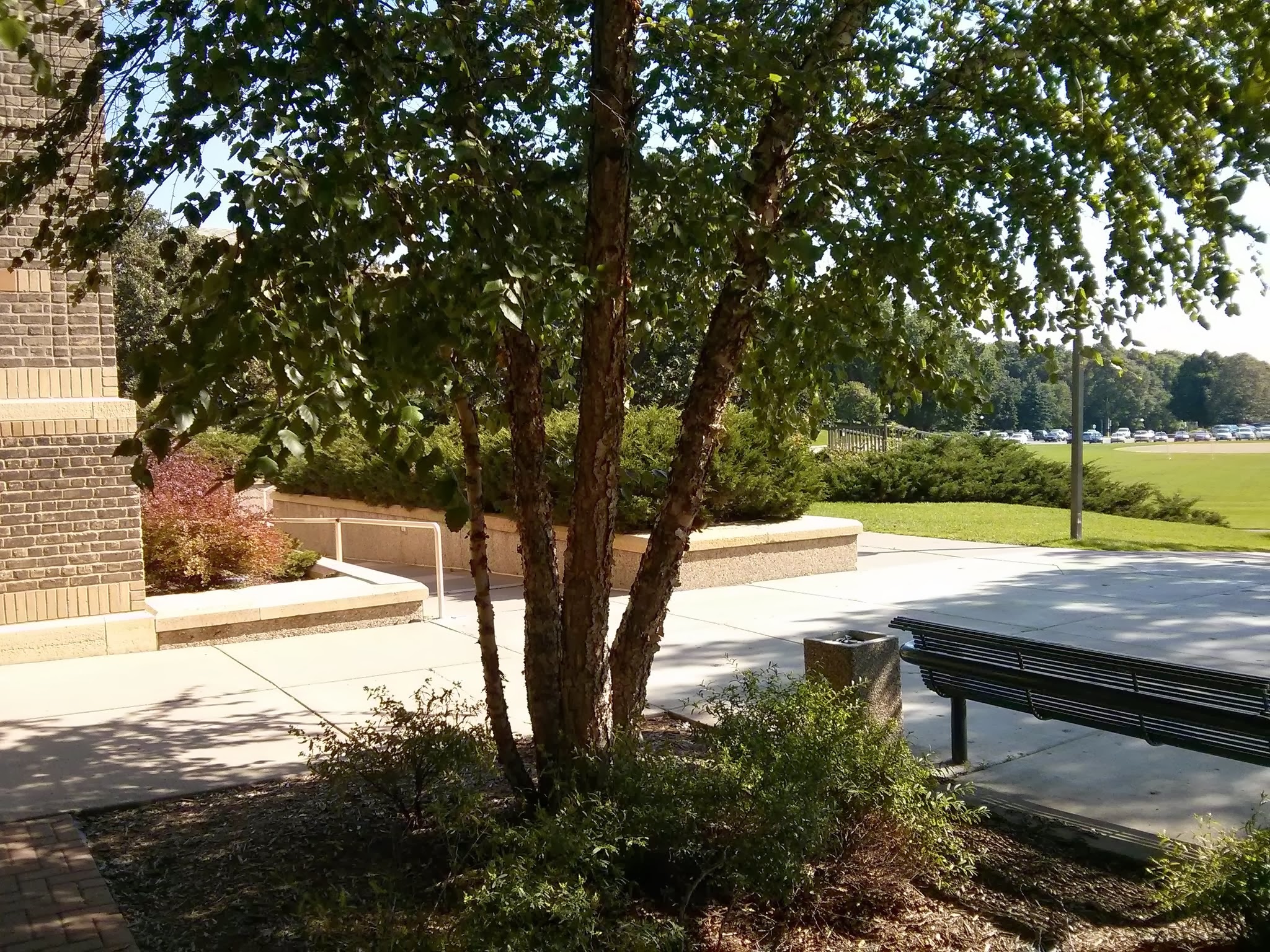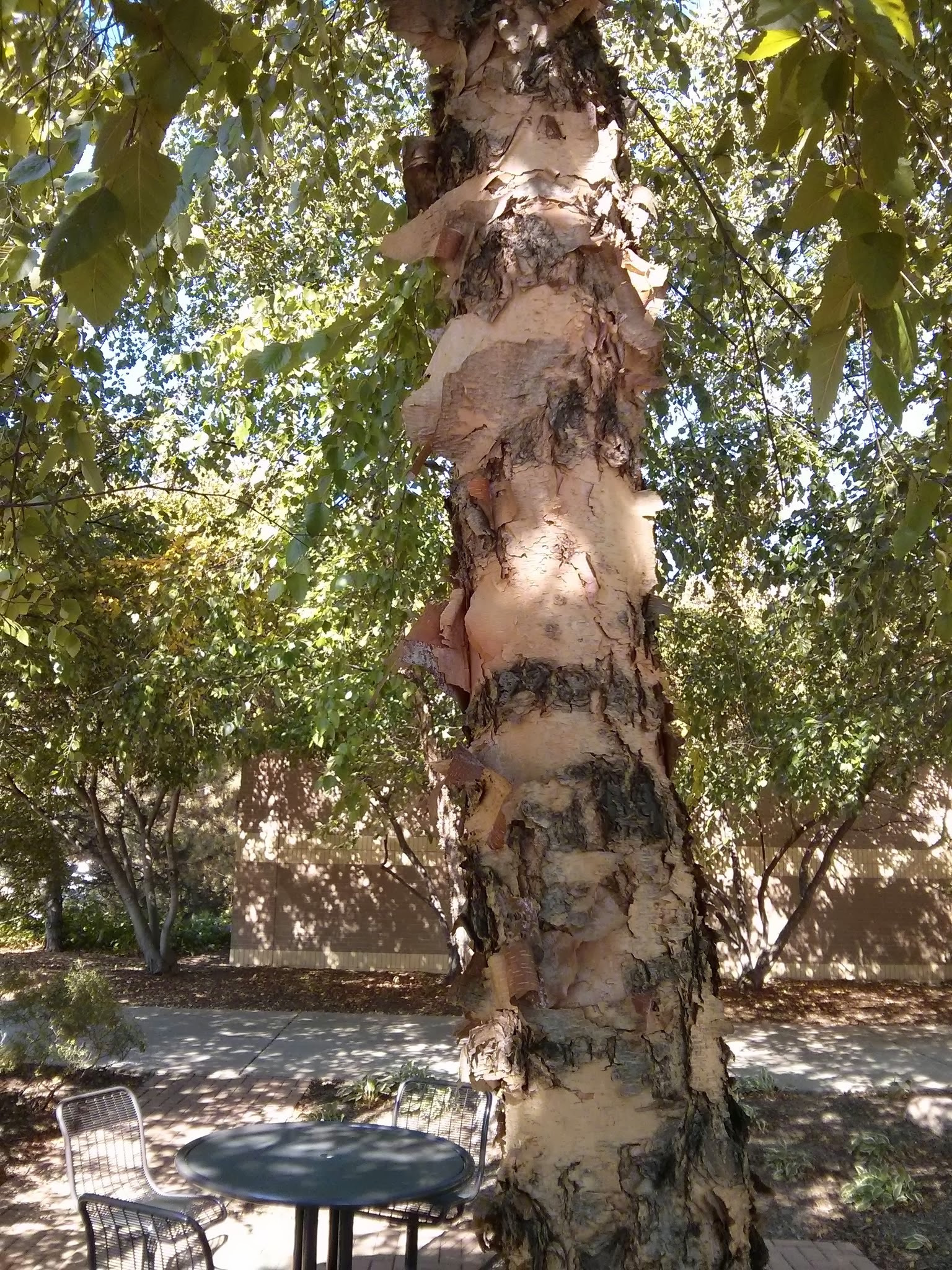Common Name: river birch
Scientific Name:
Family: Betulaceae
Genus: Betula
Species: B. nigra
Hardiness Zone: 4 to 9
Height: 40 to 70 ft
Width: 30 to 50 ft
Common characteristics:
The river birch will often have a short trunk that divides into several large ascending limbs that compose an open, irregular crown. It can be found in a single stem form or with multiple stems. The bark is often brown at the base of mature trees and is deeply furrowed. On younger bark and trees the bark is a salmon-pink to reddish-brown. This salmon-pink, peeling bark provides visual appeal all year long. Leaves are simple and grow alternately on the stem. Leaves can be between 1" to 3" in length, often in a triangular shape with doubly serrated edges. The upper surfaces are dark green while the lower surfaces are pale yellow-green. River birch turns a beautiful yellow in autumn. Its fruits are a winged nutlet that is densely crowded into a cone-shaped catkin about 1" long, this will ripens in late spring or early summer
Where it grows:
Grows best in acidic soils, moist well-drained soil, and wet soils. River birch will tolerate wet sites that experience occasional flooding as well as clay soils. This tree is tolerant of road salts and is often used in boulevards in the urban setting. Often found in the wild along river banks and lake edges. In Minnesota, the river birch is only found naturally along the Mississippi River in the southern part of the state.
How it’s used:
This tree is often used along boulevards, in yards and parks, and as ornamental trees in the landscape.
Ecosystem services:
Often used by game and songbirds, small mammals, and various insect pollinators.
Where it is native to:
Native to much of North America. Unlike Minnesota's other birches, which are northern trees, river birch can be found all the way to the Gulf of Mexico.
Known Varieties and Their Traits:
City Slicker® river birch (Betula nigra 'Whit XXV'): Dark green foliage that turns bight yellow in fall. Good drought tolerance.
Dura-Heat® river birch (Betula nigra ‘BNMTF’): Smaller, glossy, olive green leaves, whitish, exfoliating bark, more resistant to aphids; better resistance to heat.
Fox Valley® river birch (Betula nigra ‘Little King’): Dense, 10 to 12 feet high, compact growth habit, branches to the ground, glossy green leaves, exfoliating bark. Introduced through the Chicagoland Grows® program.
Heritage® river birch (Betula nigra ‘Cully’): Larger, glossy, dark green leaves, nearly white interior peeling bark, more heat tolerant.
Shiloh Splash river birch (Betula nigra 'Shiloh Splash'): A compact form growing 10 feet high and 8 feet wide. The foliage is variegated and has cream or ivory edges.
Summer Cascade river birch (Betula nigra 'Summer Cascade'): A weeping form; 6 feet high and 10 feet wide; taller if staked.
Tecumseh Compact® river birch (Betula nigra ‘Studetec’): A 10 to 12 foot tree with a rounded compact form and semi-arching branches, cinnamon-colored exfoliating bark.
Problems:
Iron chlorosis is common in high pH soils. It is susceptible to aphids, leaf miners, and leaf spots. River birch is tolerant of black walnut toxicity and resistant to bronze birch borer.
References:

